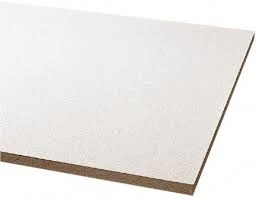9 月 . 23, 2024 20:56 Back to list
Ceiling T Bar Systems for Enhanced Structural Support and Design Flexibility
The Ceiling T-Bar System An Overview
The ceiling T-bar system, also known as a suspended or drop ceiling, is a popular choice in commercial and residential construction. This innovative design has transformed the way spaces are utilized, enhancing both aesthetic appeal and functionality.
At its core, the T-bar system comprises a grid of metal channels, arranged in a grid-like pattern and suspended from the ceiling structure. The grid serves as a framework that supports lightweight ceiling tiles, which can be easily installed and removed. This modular approach allows for great flexibility in design and functionality.
The Ceiling T-Bar System An Overview
The materials used for the T-bar system often include steel or aluminum for the grid, while the ceiling tiles can be made from various substances, including mineral fiber, fiberglass, or metal. This variety allows for customization in terms of aesthetics and acoustic performance. For instance, mineral fiber tiles are excellent for sound absorption, making them an ideal choice for office spaces where noise reduction is essential.
ceiling t bar system

Additionally, ceiling T-bar systems offer significant energy efficiency benefits. The space between the suspended ceiling and the original ceiling acts as an insulating layer, helping to regulate temperature and reduce energy consumption. In areas where lighting is a crucial element, T-bar systems can also facilitate the installation of recessed lights, allowing for greater design flexibility and creating an inviting atmosphere.
Another appealing aspect of the T-bar ceiling system is its ease of installation. Typically, installation can be completed in less time compared to traditional ceilings, resulting in cost savings on labor. Moreover, the capacity to replace individual tiles without disturbing the entire ceiling simplifies repair and maintenance tasks.
While the benefits are substantial, there are also considerations to take into account. For instance, the height of the ceiling may be reduced, which could be a drawback in spaces where ceiling height is a critical design element. Additionally, while the tiles are designed to be durable and withstand wear, they can be susceptible to moisture damage or staining, particularly in humid environments.
In conclusion, the ceiling T-bar system represents a practical solution for modern construction projects, offering versatility, ease of maintenance, and aesthetic appeal. Whether utilized in offices, retail spaces, or residential homes, this system continues to be a favorite among architects and builders alike, demonstrating its effectiveness and adaptability in various environments. As the industry evolves, the T-bar ceiling system will likely remain a staple in creating functional and visually appealing spaces.
-
Revolutionizing Interior Design with Ceilings t grid Suspended SystemNewsOct.29,2024
-
Revolutionizing Ceiling Design with ceiling access panel with Gypsum Tile WaterproofNewsOct.29,2024
-
Revolutionizing Interior Design with PVC Gypsum Ceiling: A Comprehensive GuideNewsOct.29,2024
-
Elevating Interior Design with High quality Mineral Fiber Ceiling TilesNewsOct.29,2024
-
Revolutionizing Interior Design with PVC Gypsum Ceiling: A Comprehensive GuideNewsOct.29,2024
-
Elevating Interior Design with High-Quality Mineral Fiber Ceiling Tiles: A Comprehensive GuideNewsOct.29,2024







